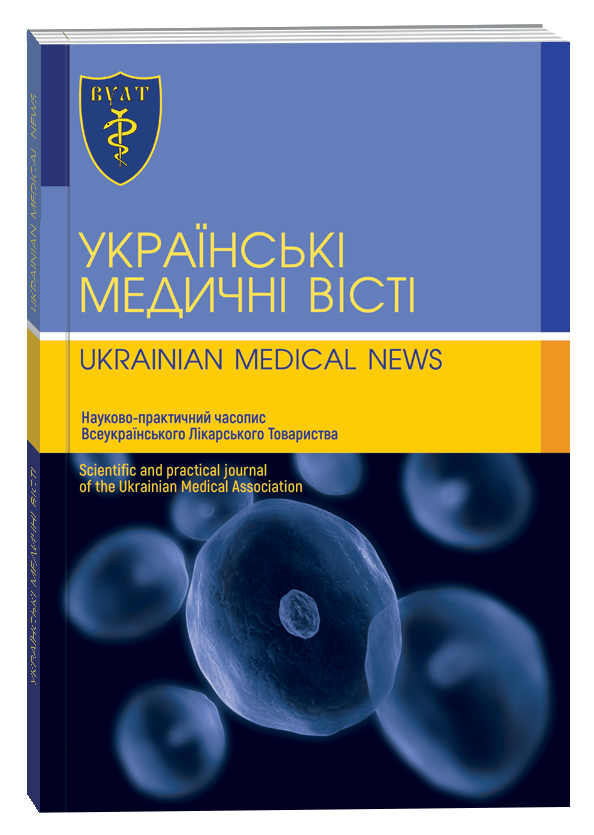THE INFLUENCE OF HYSTERECTOMY THROUGH VAGINAL AND ABDOMINAL ACCESS ON THE DEVELOPMENT OF NEUROVEGETATIVE AND VASOMOTOR SYMPTOMS
Keywords:
hysterectomy, opportunistic salpingectomy, neurovegetative, vasomotor symptom.Abstract
The abstracts present data on the development of neurovegetative and vasomotor symptoms in the late postoperative period after hysterectomy with opportunistic salpingectomy for myoma in 160 women, whose average age was (47.2 ± 2.1) years, operated on through vaginal and abdominal approaches. A dynamic survey was conducted to assess quality of life parameters, the scale of the modified menopausal index, ultrasound of the size and structure of the ovaries, FSH level in 12 and 36 months after hysterectomy. It was established in half of the observations without statistically significant differences from access to hysterectomy, hormonal imbalance is verified up to 36 months of monitoring, clinical manifestations of a hypoestrogenic state are noted in every third patient, while the age of surgical intervention is important. And the first neurovegetative and vasomotor manifestations were recorded after 1 year with a corresponding increase in FSH concentration. Therefore, hysterectomy for fibroids, unfortunately, does not completely eliminate problems with a woman’s health and quality of life, demonstrating neuroendocrine and vegetative-vascular disorders due to estrogen deficiency, even with preservation of the ovaries, which requires careful monitoring of the postoperative period and timely correction of manifestations.
References
Современная классификация лейомиом матки / В. А. Заболотнов, А. Н. Рыбалка, В. Й. Шатила, Н. В. Косолапова. Здоровье женщины. 2015. № 1(97). С. 70–73.
Rate, type, and cost of invasive interventions for uterine myomas in Germany, France, and England / H. Fernandez, M. Farrugia, S. E. Jones et al. Minim. Invasive Gynecol. 2009. Vol. 16, no. 1. P. 40–46. doi: 10.1016/j.jmig.2008.09.581.
Inpatient hysterectomy surveillance in the United States, 2000–2004 / M. K. Whiteman, S. D. Hillis, D. J. Jamieson et al. Am. J. Obstet. Gynecol. 2008. Vol. 198, no. 1. P. 34.e1–7. doi: 10.1016/j.ajog.2007.05.039.
Effect of total abdominal hysterectomy on ovarian blood supply in women of reproductive age / E. A. P. Nahás, A. Pontes, J. Nahas-Neto et al. J. Ultrasound. Med. 2005. Vol. 24, P. 169–174.
Липчанська Г. М., Квашенко В. П., Голуб’ятников І. В. Особливості гемодинаміки яєчників після гістеректомії у жінок репродуктивного віку. Вісн. Харківського нац. ун-ту. 2006. № 720. С. 102–106.
Sleep disturbance during the menopausal transition in a multi-ethnic community sample of women / H. M. Kravitz, X. Zhao, J. T. Bromberger et al. Sleep. 2008. Vol. 31, no. 7. P. 979–990.
Sleep is associated with the metabolic syndrome in a multi-ethnic cohort of midlife women: the SWAN Sleep Study / M. H. Hall, M. L. Okun, M. Sowers et al. Sleep. 2012. Vol. 35, no. 6. P. 783–790. doi: 10.5665/sleep.1874.
Are inflammatory and coagulation biomarkers related to sleep characteristics in mid-life women?: Study of women’s health across the Nation sleep study / KA Matthews, H Zheng, HM Kravitz et al. Sleep. 2010. Vol. 33, no. 12. P. 1649–1655. doi: 10.1093/sleep/33.12.1649.
Bedtime variability and metabolic health in midlife women: The SWAN Sleep Study / BJ Taylor, KA Matthews, BP Hasler et al. Sleep. 2016. Vol. 39, no. 2. P. 457–465. doi: 10.5665/sleep.5464.
Longitudinal analysis of the association between vasomotor symptoms and race/ethnicity across the menopausal transition: study of women’s health across the nation / E. B. Gold, A. Colvin, N. Avis et al. Am. J. Public Health. 2006. Vol. 96, no. 7. P. 1226–1235. doi: 10.2105/AJPH.2005.066936.
Beyond frequency: who is most bothered by vasomotor symptoms? Menopause / R. C. Thurston, J. T. Bromberger, H. Joffe et al. 2008. Vol. 15, no. 5. P. 841–847. doi: 10.1097/gme.0b013e318168f09b.
The relationship of longitudinal change in reproductive hormones and vasomotor symptoms during the menopausal transition / J. F. Jr. Randolph, M. Sowers, I. Bondarenko et al. J. Clin. Endocrinol. Metab. 2005. Vol. 90, no. 11. P. 6106–6112. doi: 10.1210/jc.2005-1374.
Adiposity and reporting of vasomotor symptoms among midlife women: the study of women’s health across the nation / R. C. Thurston, M. R. Sowers, Y. Chang et al. Am. J. Epidemiol. 2008. Vol. 167, no. 1. P. 78–85. doi: 10.1093/aje/kwm244.
2018 AHA/ACC/AACVPR/AAPA/ABC/ACPM/ADA/AGS/APhA/ASPC/NLA/PCNA Guideline on the Management of Blood Cholesterol: Executive Summary: A Report of the American College of Cardiology/American Heart Association Task Force on Clinical Practice Guidelines / S. M. Grundy, N. J. Stone, A. L. Bailey et al. J. Am. Coll. Cardiol. 2019. Vol. 73, no. 24. P. 3168–3209. doi: 10.1016/j.jacc.2018.11.002.







